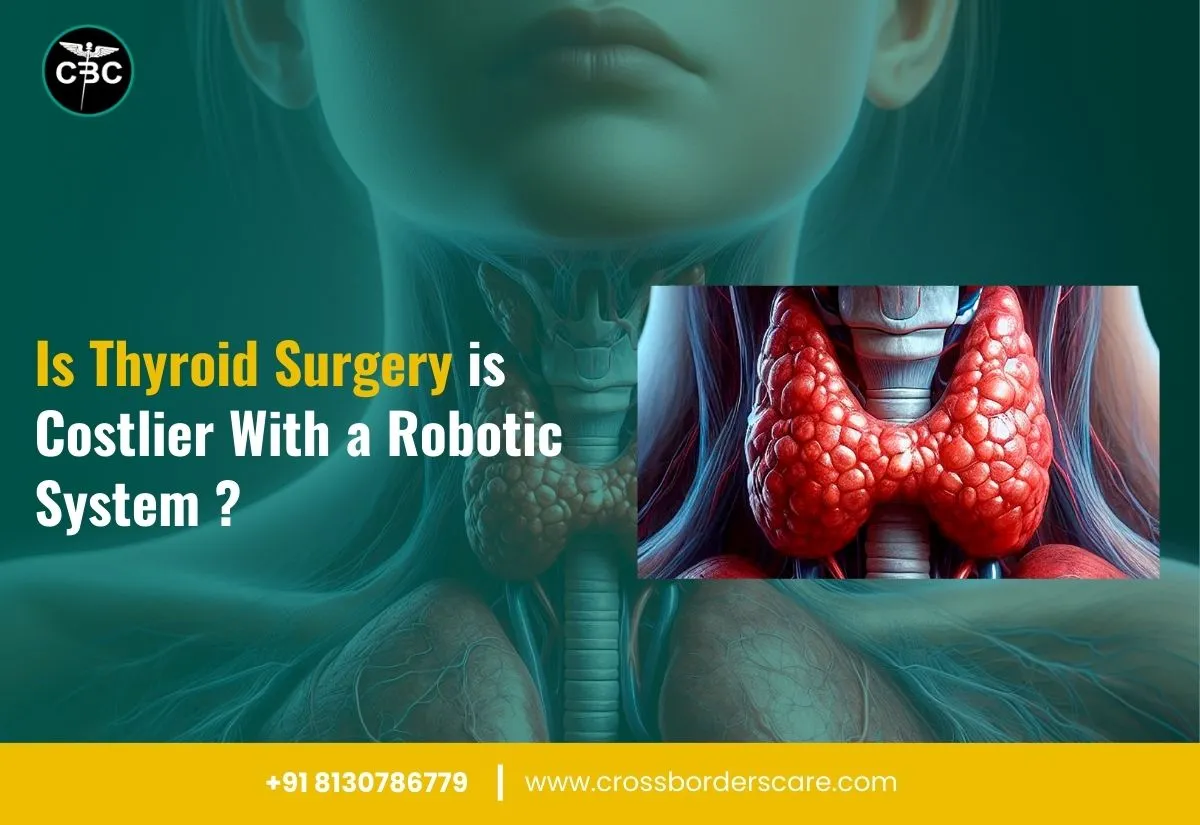Patients suffering from thyroid problems may go for thyroidectomy which is the surgical removal of the thyroid gland. It is effective in different conditions like hyperthyroidism, benign nodules, and thyroid cancer. Traditionally, thyroidectomy was performed using conventional laparoscopy or open techniques.
The modern advancements in medical sciences have introduced the use of robotic technology in thyroidectomy. Read on to know more on robotic thyroidectomy and its key advantages.
What is robotic thyroidectomy?
It is a modern surgical process using robots to help surgeons perform dedicated thyroidectomy. Dedicated systems like the Da Vinci Surgical System offer a console for surgeons to make small incisions with the robotic arms.
The different steps involved in the Robotic thyroidectomy are:
- The patient is placed under general anaesthesia.
- The robotic system offers a console for surgeons to sit and manipulate the robotic arms having specialised surgical instruments.
- Robotic arms perform the dedicated thyroidectomy process.
- Small incisions are then closed with sutures.
Benefits of the robotic thyroidectomy
After having a quick overview of the process, here are some of the key advantages of the robotic thyroidectomy:
Minimally invasive process
Firstly, it is a minimally invasive process with small incisions and less scarring. This process involves small incisions compared to the traditional open surgery leading to fast recovery and postoperative pains.
The overall scarring in the robotic thyroidectomy is least visible as it is performed due to a single hidden incision. This incision is located in the armpit or other conspicuous locations.
Improved control and precision
The use of the robots in thyroidectomy are equipped with high-definition 3D cameras offering a magnified view of the surgical field. It helps surgeons with the improved visualisation of the thyroid with better identification and presentation of parathyroid glands and laryngeal nerves around the thyroid surgery.
The robotic arms offer a larger range of motion than the hands of the surgeons. Hence, it is easy to allow more precise movements and control during the thyroidectomy. The cases requiring meticulous dissection or other complex cases are easily handled by the robotic thyroidectomy.
Reduced recovery time
Robotic thyroidectomy offers shorter hospital stays when compared to patients undergoing traditional thyroidectomy. Patients can go to their homes the same day or the following day.
The minimally invasive process of this surgery results in quick recovery time. Hence, patients can easily return to their normal activities and work accordingly.
Reduced postoperative pain
Due to the small incisions, the robotic thyroidectomy offers less discomfort to patients with reduced postoperative pain. Hence, pain management after the surgery is easy for the patients.
The management of any possible pains in this process is best offered with the help of dedicated medications.
Reduced complications risk
While every surgical process has its set of complications risk, the robotic thyroidectomy offers reduced risks when compared to the traditional thyroidectomy process. The risk of infections in the small incisions are low when compared to the large surgical wounds.
Any risks of vocal cord paralysis are reduced due to the quick identification and preservation of the critical surrounding structures of the thyroid like the recurrent laryngeal nerve.
Reduced visible scarring
Last but not least, the robotic thyroidectomy is ideal for patients aiming at visual benefits with reduced visible scarring. The small incisions further ensures that this medical process is aesthetically appealing.
Wrapping Up
Robotic thyroidectomy offers a significant advancement in the management of the thyroid surgery. It is easy to understand the process and top advantages of robotic thyroidectomy. With the consistent advancements in robotic-assisted surgeries, its application in thyroidectomy is set to grow.
Cross Border Care ensures that patients looking for advanced treatments like robotic thyroidectomy get the best hospitals, expert surgeons, and affordable treatments in India.






